World
Gaza war to last months, Israel says, as fears of conflict spread rise
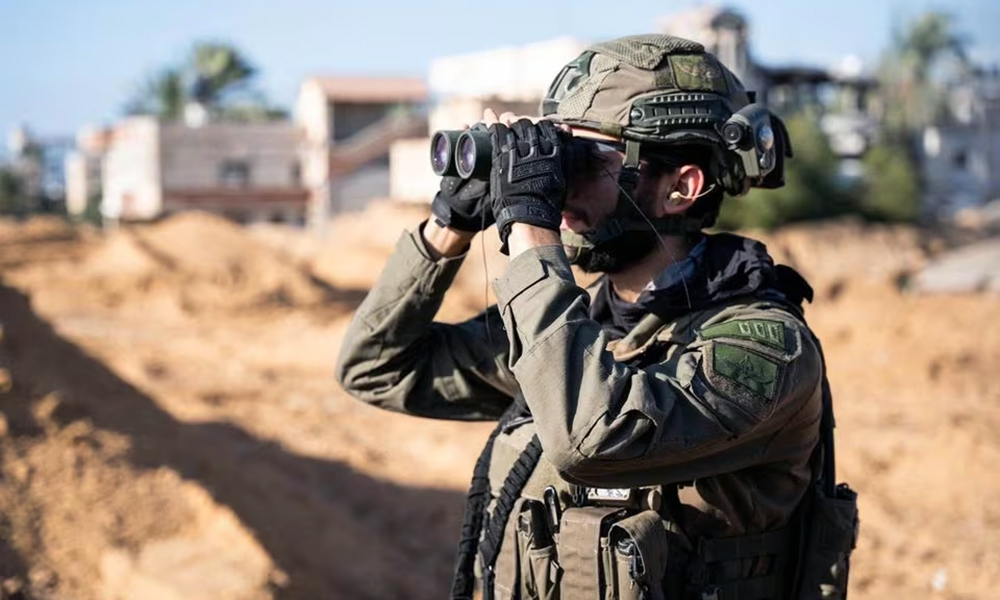
Israel’s war on Hamas will last months, Israel’s military chief said, as a string of incidents outside the Gaza Strip highlighted the risk of the conflict spreading, Reuters reported.
Israel’s Chief of Staff Herzi Halevi told reporters in a televised statement on Tuesday from the Gaza border that the war would go on “for many months”.
“There are no magic solutions, there are no shortcuts in dismantling a terrorist organization, only determined and persistent fighting,” Halevi said. “We will reach Hamas’ leadership too, whether it takes a week or if it takes months.”
Israeli actions intensified around Christmas, particularly in a central area just south of the seasonal waterway that bisects the Gaza Strip. The Israeli army told civilians to leave the area, though many said there was no safe place left to go.
“We are gravely concerned about the continued bombardment of Middle Gaza by Israeli forces, which has claimed more than 100 Palestinian lives since Christmas Eve,” said U.N. Human Rights Office spokesperson Seif Magango on Tuesday.
“Israeli forces must take all measures available to protect civilians. Warnings and evacuation orders do not absolve them of the full range of their international humanitarian law obligations.”
Israel is determined to destroy Hamas despite global calls for a ceasefire in the 11-week-old war.
Since Hamas killed 1,200 people and captured 240 hostages on Oct. 7 in the deadliest day in Israeli history, Israeli Prime Minister Benjamin Netanyahu has responded with an assault that has laid much of Hamas-ruled Gaza to waste.
Palestinian health authorities say nearly 21,000 people have been killed in Israeli strikes, with thousands more feared buried under rubble. Nearly all the enclave’s 2.3 million people have been driven from their homes, many several times.
Gaza authorities buried 80 unidentified Palestinians on Tuesday whose bodies were handed over by Israel through the Kerem Shalom border crossing, the health ministry said.
According to the Islamic Waqf, or religious affairs ministry, the bodies were collected from the northern part of the Gaza Strip. They were buried in a long ditch at a Rafah cemetery in the south.
“Pictures are being taken to identify them later,” a representative of the Gaza Islamic Waqf said during the burials.
Israel says it is doing what it can to protect civilians, and blames Hamas for putting them in harm’s way by operating among them, which Hamas denies. But even Israel’s closest ally the United States has said it should do more to reduce civilian deaths from what President Joe Biden has called “indiscriminate bombing”.
Spread threat
There are growing signs the conflict is starting to spread.
Yemen’s Iran-backed Houthi militia claimed responsibility for a missile attack on Tuesday on a container ship in the Red Sea and for an attempt to attack Israel with drones.
The Houthis have been attacking ships they say have links to Israel in the entrance to the Red Sea, one of the world’s busiest shipping lanes. The attacks are a response to Israel’s assault on Gaza, the militia says.
An Israeli airstrike killed a senior leader of Iran’s Revolutionary Guards in Syria on Monday, Reuters reported.
And on the Lebanon border on Tuesday, Israel said Hezbollah fired anti-tank missiles at a church, wounding nine Israeli soldiers and a civilian, after which it fired rockets from near a mosque, drawing retaliatory airstrikes.
In India, meanwhile, there was an explosion near the Israeli embassy in New Delhi. Authorities said no staff were hurt.
“We are in a multi-front war and are coming under attack from seven theatres: Gaza, Lebanon, Syria, Judea and Samaria (the West Bank), Iraq, Yemen and Iran,” Israeli Defence Minister Yoav Gallant told lawmakers on Tuesday, listing six places where Iran-backed militants are active, as well as Iran itself.
“We have already responded and taken action in six of these theatres,” he said, without specifying the one that had yet to see Israeli action.
Israeli Minister of Strategic Affairs Ron Dermer was meeting U.S. Secretary of State Antony Blinken and national security adviser Jake Sullivan in Washington on Tuesday for talks on the war and the return of hostages, the White House said.
The United States has openly pressed Israel in recent weeks to scale down its war to a more targeted operation of raids on Hamas leaders. But Washington is still seen in the region as a supporter of Israel and U.S. forces have been attacked by Iran-backed militants in the Middle East.
The U.S. military carried out retaliatory airstrikes on Kataib Hezbollah militants in Iraq on Monday after a drone attack on a U.S. base in Erbil left one U.S. service member in critical condition and wounded two.
World
Trump says Zelenskiy wants to back out of critical minerals deal
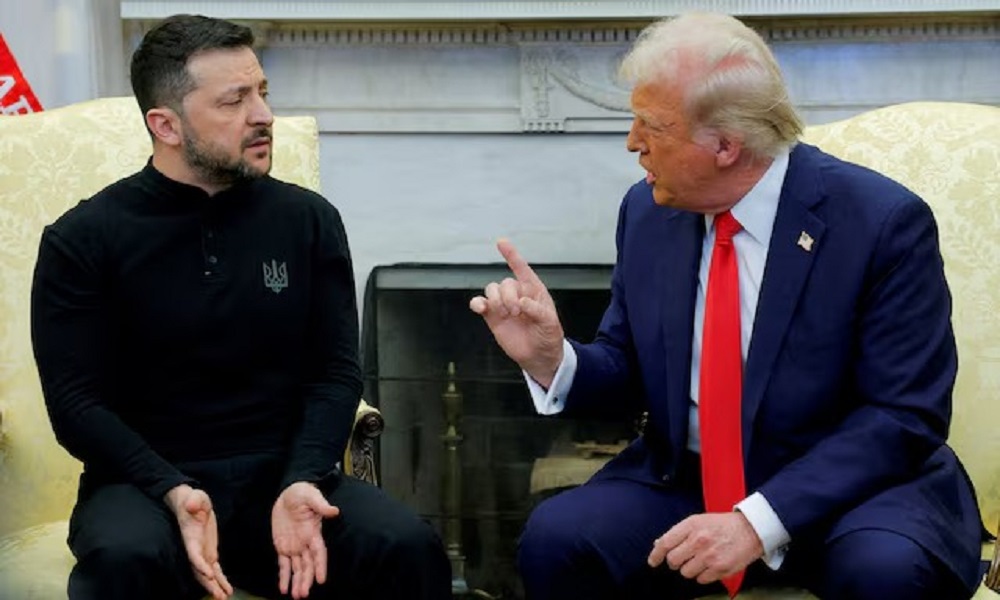
U.S. President Donald Trump said on Sunday Ukrainian President Volodymyr Zelenskiy wants to back out of a critical minerals deal, warning the Ukrainian leader would face big problems if he did.
“He’s trying to back out of the rare earth deal and if he does that he’s got some problems, big, big problems,” Trump told reporters.
“He wants to be a member of NATO, but he’s never going to be a member of NATO. He understands that.”
(Reuters)
World
South Korea, China, Japan seek regional trade amid Trump tariffs
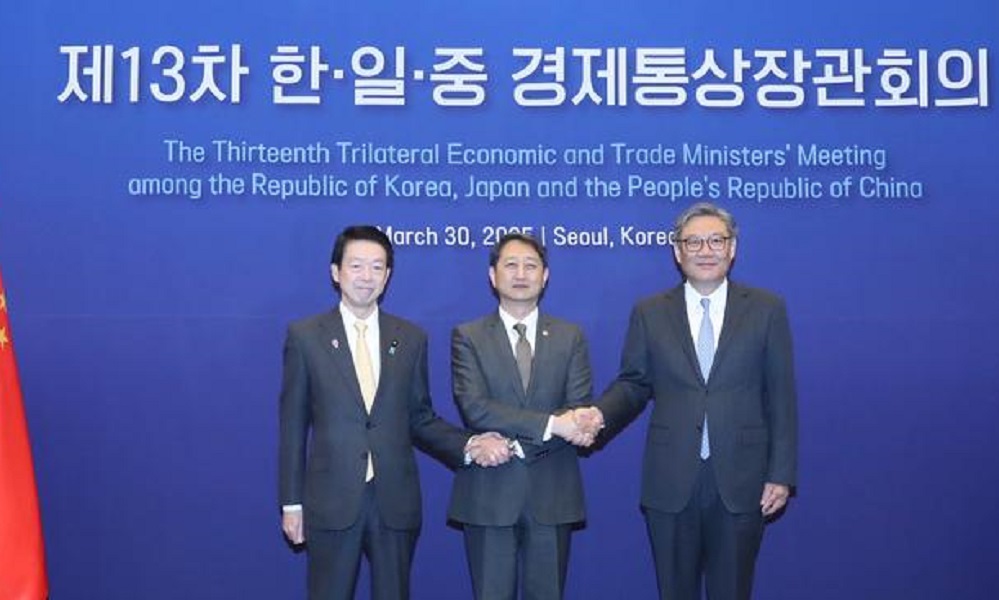
South Korea, China and Japan held their first economic dialogue in five years on Sunday, seeking to facilitate regional trade as the three Asian export powers brace from U.S. President Donald Trump’s tariffs.
The countries’ three trade ministers agreed to “closely cooperate for a comprehensive and high-level” talks on a South Korea-Japan-China free trade agreement deal to promote “regional and global trade”, according to a statement released after the meeting.
“It is necessary to strengthen the implementation of RCEP, in which all three countries have participated, and to create a framework for expanding trade cooperation among the three countries through Korea-China-Japan FTA negotiations,” said South Korean Trade Minister Ahn Duk-geun, referring to the Regional Comprehensive Economic Partnership.
The ministers met ahead of Trump’s announcement on Wednesday of more tariffs in what he calls “liberation day”, as he upends Washington’s trading partnerships.
Seoul, Beijing and Tokyo are major U.S. major trading partners, although they have been at loggerheads among themselves over issues including territorial disputes and Japan’s release of wastewater from the wrecked Fukushima nuclear power plant.
They have not made substantial progress on a trilateral free-trade deal since starting talks in 2012.
RCEP, which went into force in 2022, is a trade framework among 15 Asia-Pacific countries aimed at lowering trade barriers.
Trump announced 25% import tariffs on cars and auto parts last week, a move that may hurt companies, especially Asian automakers, which are among the largest vehicle exporters to the U.S.
After Mexico, South Korea is the world’s largest exporter of vehicles to the United States, followed by Japan, according to data from S&P.
The ministers agreed to hold their next ministerial meeting in Japan.
(Reuters)
World
Myanmar quake death toll hits 1,700 as aid scramble intensifies
India, China and Thailand are among Myanmar’s neighbours that have sent relief materials and teams, along with aid and personnel from Malaysia, Singapore and Russia.
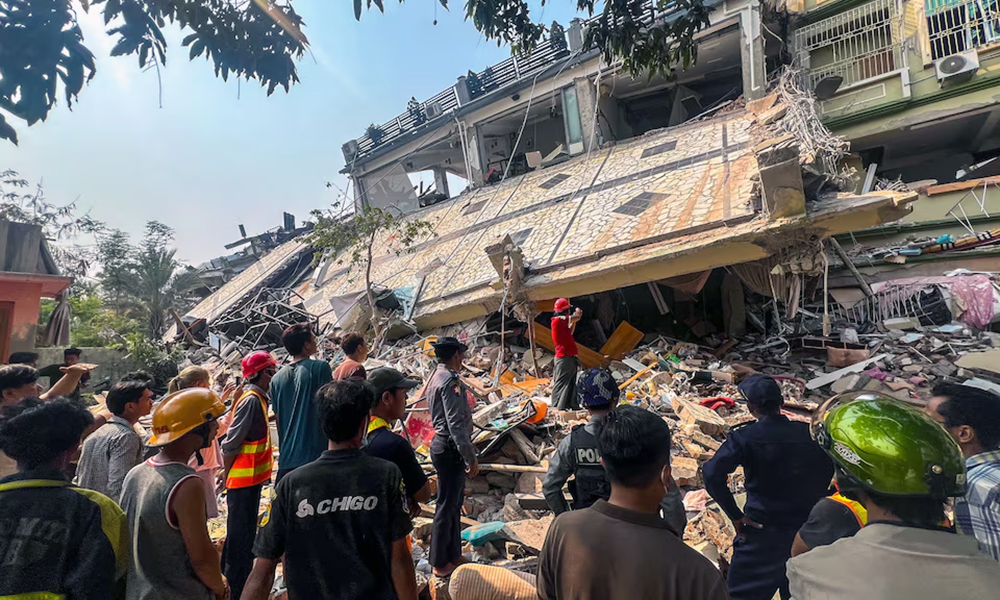
The toll from Myanmar’s earthquake continued to rise on Sunday, as foreign rescue teams and aid rushed into the impoverished country, where hospitals were overwhelmed and some communities scrambled to mount rescue efforts with limited resources.
The 7.7-magnitude quake, one of Myanmar’s strongest in a century, jolted the war-torn Southeast Asian nation on Friday, leaving around 1,700 people dead, 3,400 injured and over 300 missing as of Sunday, the military government said.
The junta chief, Senior General Min Aung Hlaing, warned that the number of fatalities could go up and his administration faced a challenging situation, state media reported, three days after he made a rare call for international assistance.
India, China and Thailand are among Myanmar’s neighbours that have sent relief materials and teams, along with aid and personnel from Malaysia, Singapore and Russia.
“The destruction has been extensive, and humanitarian needs are growing by the hour,” the International Federation of Red Cross and Red Crescent Societies said in a statement.
“With temperatures rising and the monsoon season approaching in just weeks, there is an urgent need to stabilise affected communities before secondary crises emerge.”
The devastation has piled more misery on Myanmar, already in chaos from a civil war that grew out of a nationwide uprising after a 2021 military coup ousted the elected government of Nobel Peace Prize laureate Aung San Suu Kyi.
Critical infrastructure – including bridges, highways, airports and railways – across the country of 55 million lie damaged, slowing humanitarian efforts while the conflict that has battered the economy, displaced over 3.5 million people and debilitated the health system rages on.
In some areas near the epicentre, residents told Reuters that government assistance was scarce, leaving people to fend for themselves.
“It is necessary to restore the transportation routes as soon as possible,” Min Aung Hlaing told officials on Saturday, according to state media. “It is necessary to fix the railways and also reopen the airports so that rescue operations would be more effective.”
The U.S. Geological Service’s predictive modelling estimated Myanmar’s death toll could top 10,000 and losses could exceed the country’s annual economic output.
Hospitals in parts of central and northwestern Myanmar, including the second-biggest city, Mandalay, and the capital Naypyitaw, were struggling to cope with an influx of injured people, the U.N. Office for the Coordination of Humanitarian Affairs said late on Saturday.
The quake also shook parts of neighbouring Thailand, bringing down an under-construction skyscraper and killing 18 people across the capital, according to Thai authorities.
At least 76 people remained trapped under the debris of the collapsed building, where rescue operations continued for a third day, using drones and sniffer dogs to hunt for survivors.
The opposition National Unity Government, which includes remnants of the previous administration, said anti-junta militias under its command would pause all offensive military actions for two weeks from Sunday.
The devastation in some areas of upper Myanmar, such as the town of Sagaing near the quake’s epicentre, was extensive, said resident Han Zin.
“What we are seeing here is widespread destruction – many buildings have collapsed into the ground,” he said by phone, adding that much of the town had been without electricity since the disaster hit and drinking water was running out.
“We have received no aid, and there are no rescue workers in sight.”
Sections of a major bridge connecting Sagaing to nearby Mandalay collapsed, satellite imagery showed, with spans of the colonial-era structure submerged in the Irrawaddy river.
“With bridges destroyed, even aid from Mandalay is struggling to get through,” Sagaing Federal Unit Hluttaw, a political association linked to the NUG, said on Facebook.
“Food and medicine are unavailable, and the rising number of casualties is overwhelming the small local hospital, which lacks the capacity to treat all the patients.”
In Mandalay, scores of people were feared trapped under collapsed buildings and most could not be reached or pulled out without heavy machinery, two humanitarian workers and two residents said.
“My teams in Mandalay are using work gloves, ropes and basic kits to dig and retrieve people,” said one of the humanitarian workers. Reuters is not naming them because of security concerns.
“There are countless trapped and still missing. The death toll is impossible to count at the moment due to the number trapped and unidentified, if alive.”
A video filmed by a Mandalay resident on Saturday and shared with Reuters showed patients in beds, some attached to drips, on the grounds outside a 500-bed orthopaedic hospital in the city.
Public and private health care facilities in Mandalay, including the Mandalay General Hospital and parts of Mandalay Medical University, were damaged by the quake, according to the World Health Organization.
Russian and Indian rescue workers were heading to Mandalay, and multiple teams of Chinese, Thai and Singapore rescue personnel have also arrived in the country.
In Bangkok, at the site of the collapsed 33-storey building, rescuers surrounded by shattered concrete piles and twisted metal continued their efforts to rescue dozens of workers trapped under the rubble.
Teerasak Thongmo, a Thai police commander, said his team of policemen and rescue dogs were racing against time to locate survivors, struggling to move around metal debris and sharp edges on an unstable structure.
“Right now, our team is trying to find anyone that might still be alive. Within the first 72 hours, we have to try and save those still alive,” he said.
Near the rescue operations, relatives and friends of the missing and trapped construction workers waited for news. Some broke down.
“Ploy, Ploy, Ploy, my daughter, I’m here for you now!” one woman wailed, as she was hugged by two others. “Ploy, can you hear me calling out for you?”
-

 Latest News4 days ago
Latest News4 days agoAmnesty international urges Pakistan to halt Afghan deportations
-

 Latest News4 days ago
Latest News4 days agoAfghanistan-Iran-Europe railway corridor activated
-

 Business4 days ago
Business4 days agoAfghanistan ships first consignment to Europe via Khaf-Herat railway
-
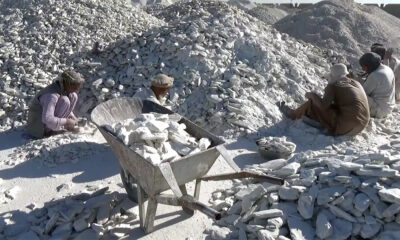
 Business3 days ago
Business3 days ago36 mining contracts inked over the past year: Mines ministry
-

 Sport4 days ago
Sport4 days agoDe Kock fireworks see Kolkata thrash Rajasthan in IPL
-

 Latest News3 days ago
Latest News3 days agoDried fruit market in Herat booms ahead of Eid-al-Fitr
-

 Regional3 days ago
Regional3 days agoPowerful quake in Southeast Asia kills several, Myanmar declares state of emergency
-

 Latest News3 days ago
Latest News3 days agoUS may ask for military equipment left behind in Afghanistan: Trump


























